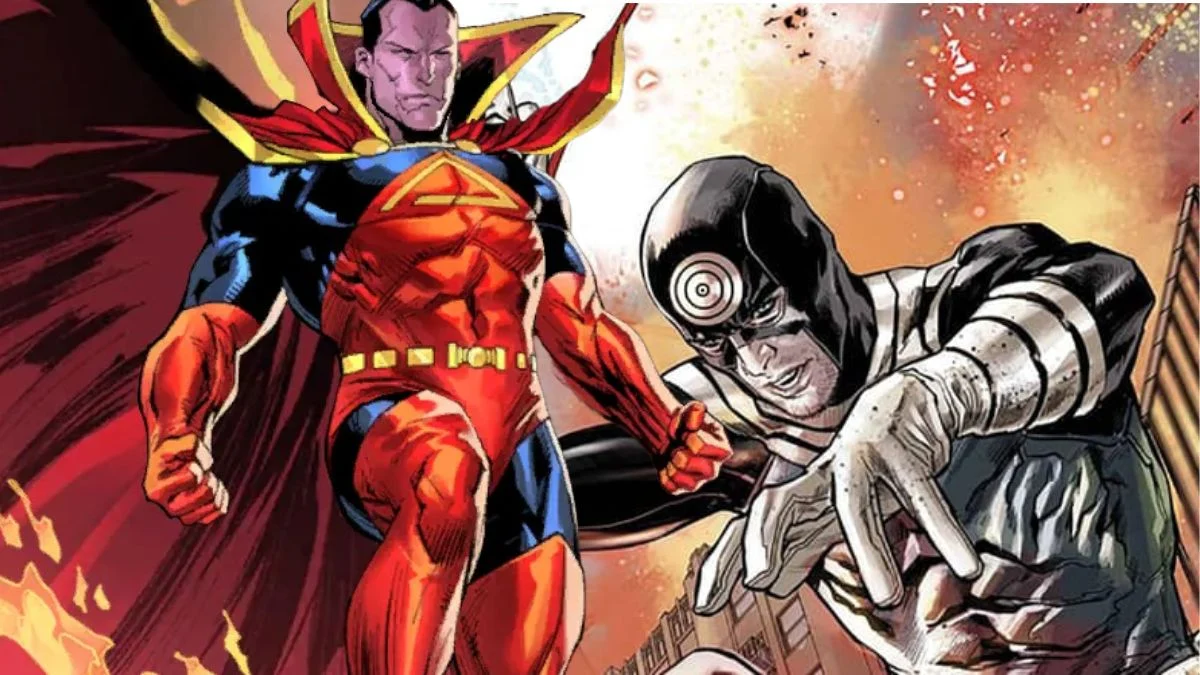
Comics often borrow ideas from each other, and it’s common to see striking similarities between heroes from different publishers. When you compare characters from Marvel and DC, you’ll notice matching powers, costumes, and origins. This doesn’t diminish the enjoyment of reading comics, but it does highlight how the industry constantly builds on and responds to its own history, creating an ongoing dialogue.
This list explores how certain Marvel characters are strikingly similar to classic DC heroes. It highlights parallels in their powers, the parts they play in their universes, and when they first appeared. For each Marvel character, we’ll show you who created them, their first comic book issue, the core idea they borrow, and the original DC character that inspired them. It’s a useful guide to see how Marvel and DC often mirror each other.
Hyperion

Hyperion first appeared in ‘The Avengers’ #69 in 1969, created by Roy Thomas and Sal Buscema as a member of the villainous Squadron Sinister. He was originally designed with powers like flight, heat vision, and incredible strength, along with near invulnerability – all explained by him being an alien or coming from another universe. Later storylines, focusing on the heroic team the Squadron Supreme, developed Hyperion into a dedicated leader and full-time hero.
He clearly modeled his character after Superman, the original superhero who debuted in 1938. Superman established the blueprint for powerful, flying heroes with strong moral values. Even the name ‘Hyperion’ suggests a connection to Superman’s home world, Krypton, and the entire Squadron team within Marvel comics operates much like DC’s Justice League.
Sentry

Sentry first appeared in 2000 in ‘The Sentry’ #1, created by Paul Jenkins and Jae Lee. He’s presented as an incredibly powerful hero whose existence was intentionally erased from everyone’s memory. Sentry possesses abilities like super strength, flight, and energy blasts, and can also heal quickly. However, he’s haunted by the Void, a dangerous and destructive alter ego that makes being a hero even more challenging.
This model embodies the same powerful, world-saving archetype as Superman – a single hero representing immense good in situations with global consequences. While Marvel explored similar themes through characters with manipulated memories and complex inner struggles, the core concept of a supremely powerful figure symbolizing hope clearly follows the foundation DC Comics laid down years ago.
Gladiator
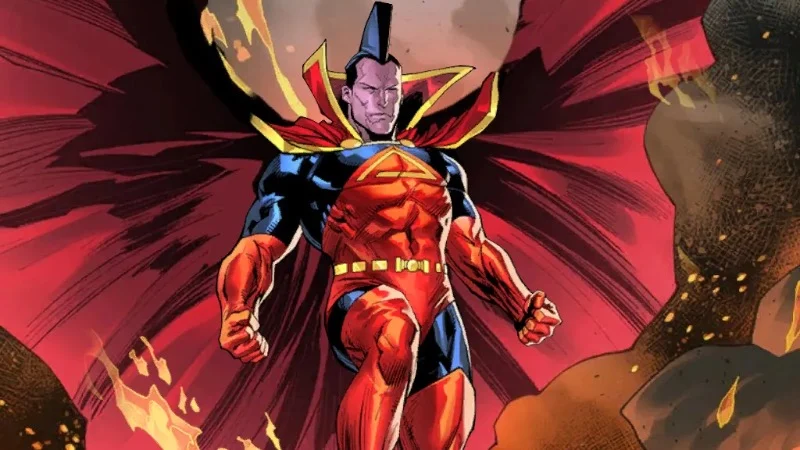
Gladiator debuted in ‘X-Men’ #107 in 1977. Created by Chris Claremont and Dave Cockrum, he began as the Praetor of the Shi’ar Imperial Guard. He can fly, shoot heat beams from his eyes, and possesses incredible strength that increases as his self-assurance grows. His birth name, Kallark, is a combination of ‘Kal’ and ‘Clark,’ acknowledging the creators’ inspiration from Superman.
Superman is the clear inspiration for Gladiator, both in terms of his abilities and iconic look. The Imperial Guard is also heavily based on DC’s Legion of Super-Heroes, and Gladiator’s role within that team highlights how Marvel drew from DC characters when building its universe of cosmic heroes.
Nighthawk
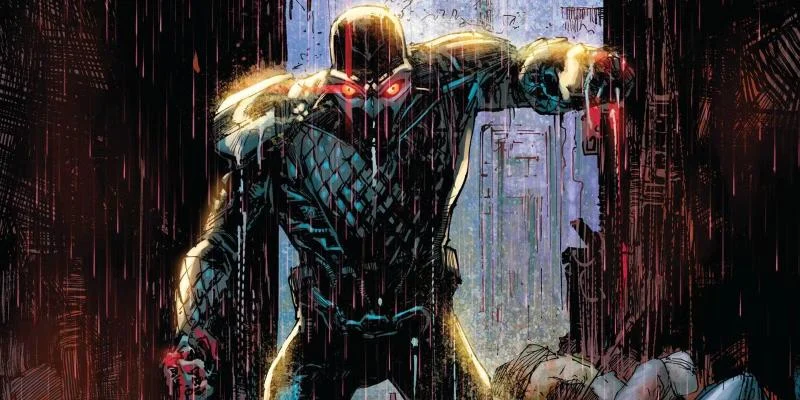
Nighthawk first appeared in Marvel’s ‘The Avengers’ comic book in 1969, specifically issue #69. Created by Roy Thomas and Sal Buscema, he began as a villain with the Squadron Sinister, but later evolved into a heroic character. Kyle Richmond is a rich businessman who fights crime using technology, intense training, and a dark, nighttime-themed persona—he doesn’t have any natural superpowers.
Batman established the classic idea of a wealthy, independent hero who fights crime using specialized equipment and focuses on city-level threats, a model DC Comics has used since 1939. The superhero team known as the Squadron directly mirrors this, with their character Nighthawk acting as a realistic and strategic leader, much like Batman is for the Justice League.
Hawkeye

Hawkeye first appeared in ‘Tales of Suspense’ #57 in 1964, created by Stan Lee and Don Heck. He’s a highly skilled archer known for his special arrows and acrobatic abilities, and he has a strong background as an Avenger. The character is defined by his expertise, accuracy, and ability to think on his feet – skills that are more valuable than brute strength.
Green Arrow first appeared in 1941, over twenty years before any similar characters, and essentially created the archetype of the modern comic book archer hero. While both heroes utilize specialized, themed arrows, play important roles on teams, and operate at a street level, Marvel created its own version of this concept, adapting it to fit its universe of relatable, human-scale heroes.
Quicksilver

Pietro Maximoff, known as Quicksilver, first appeared in ‘The X-Men’ #4 back in 1964, created by Stan Lee and Jack Kirby. He’s famous for his incredible super speed, which affects how he fights, perceives the world, and travels. Over the years, he’s been a member of both the Brotherhood and the Avengers, and remains a key figure in the world of mutants.
The Flash has been DC’s benchmark for super-speed since 1940, beginning with the character Jay Garrick and continuing with Barry Allen. These versions established the core ideas and narrative techniques used for speedsters. Quicksilver’s powers are based on the same concept – that incredible speed alters everything – which DC Comics thoroughly explored long before Marvel created their own speedster.
Deadpool

Deadpool first appeared in the comic book ‘The New Mutants’ #98 in 1991, created by Rob Liefeld and Fabian Nicieza. He was introduced as a wisecracking mercenary with the ability to heal quickly, wearing a red and black suit. Initially a hired killer, he soon began to evolve into more of an antihero. His creator cleverly hinted at his true identity – Wade Wilson – through his character.
Deathstroke, created by Marv Wolfman and George Pérez in 1980’s ‘The New Teen Titans’ #2, is known as Slade Wilson – a brilliant strategist and highly skilled assassin. While Marvel developed a similar character, they leaned into humor and self-awareness, but kept the basic concept of a mercenary fighter.
Black Cat
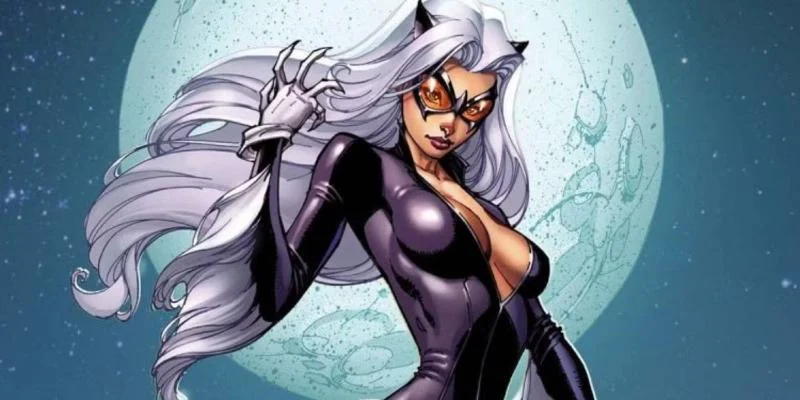
Black Cat first appeared in ‘The Amazing Spider-Man’ #194 in 1979, created by Marv Wolfman and Keith Pollard. Felicia Hardy is a skilled thief who relies on acrobatics, technology, and eventually, powers that manipulate probability. She frequently switches between being an ally and an enemy of Spider-Man.
Catwoman first appeared in 1940 in ‘Batman’ #1 and created the classic image of a graceful, cat-themed thief known for skillful heists and a complex connection with the hero. Marvel’s Black Cat follows this same pattern, possessing similar abilities and themes, but set in New York City – essentially offering a familiar cat burglar story within the Marvel universe.
Doctor Spectrum
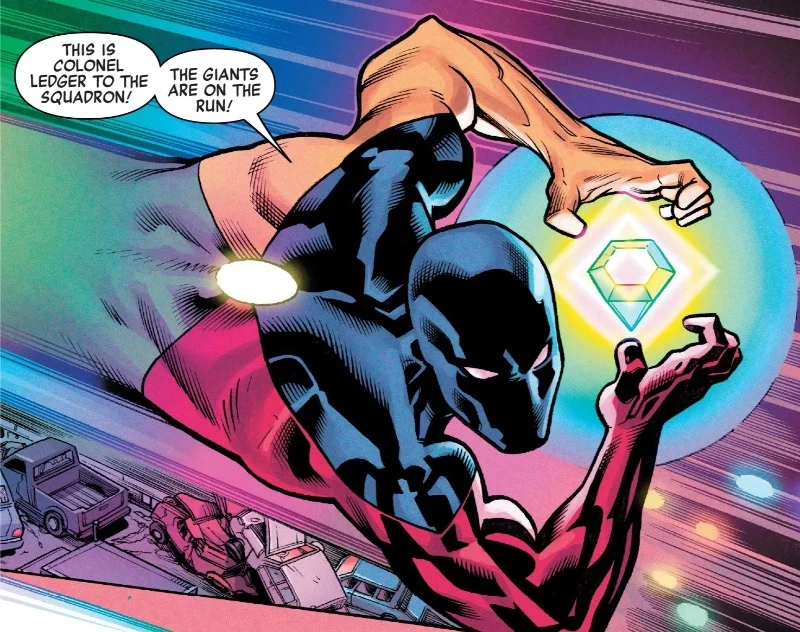
Doctor Spectrum first appeared in ‘The Avengers’ #69 in 1969, created by Roy Thomas and Sal Buscema. He wields the Power Prism, which allows him to create objects, fire energy blasts, and fly. Over the years, different characters have become Doctor Spectrum, often in stories linked to the teams known as the Squadron Sinister and Squadron Supreme.
Green Lantern first introduced the idea in 1940 and then again in 1959: a ring that transforms willpower into solid light creations and fuels a team of galactic peacekeepers. Marvel’s Doctor Spectrum’s Prism works similarly, providing a ring-like energy tool that mirrors this concept, much like the Justice League is reflected in Marvel’s Squadron.
Power Princess
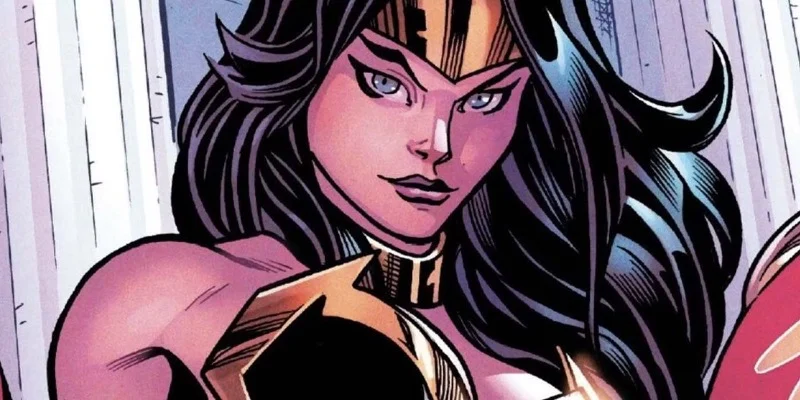
I first discovered Power Princess way back in the original ‘Squadron Supreme’ series in 1985! She’s Zarda, and she’s seriously awesome. She comes from this hidden island called Utopia Isle and is a total warrior. She’s incredibly strong, and in most stories, she can fly. Plus, she’s a highly trained fighter with a strong connection to her island’s traditions and values. She quickly became one of the team’s leaders, and I’ve been a fan ever since!
As a movie fan, I’ve always loved Wonder Woman – she first appeared way back in 1941! The idea of this incredibly strong warrior coming from a secret island to make a difference in the world is just fantastic. Power Princess feels like she fills that same role over at Marvel. She’s basically their version of Wonder Woman, an Amazonian-type hero who’s a major player alongside Hyperion, giving the team a huge boost of power.
Ant Man
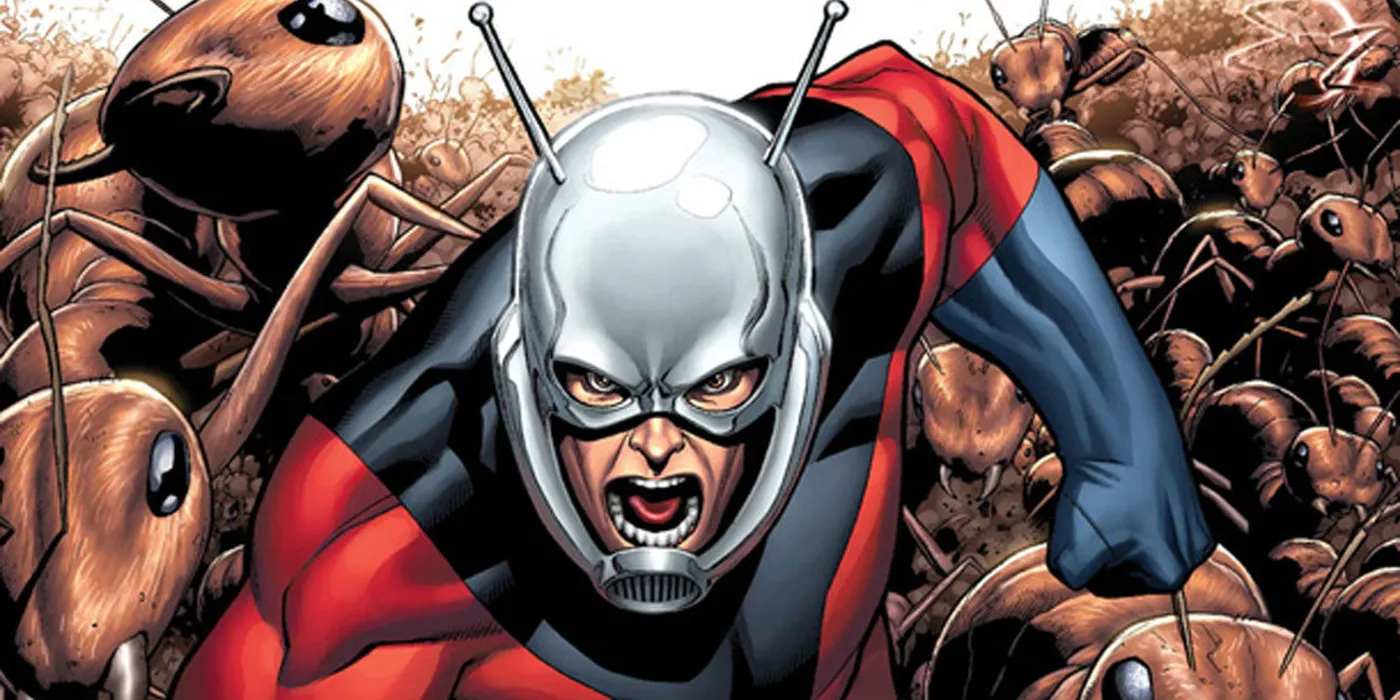
Ant-Man first appeared in 1962 in ‘Tales to Astonish’ #27, created by Stan Lee, Larry Lieber, and Jack Kirby. The character, originally Hank Pym, was fully developed by issue #35. Pym uses special particles, called Pym Particles, to change size – shrinking down to the size of an insect, communicating with ants via a helmet, and even growing to enormous size. His powers are rooted in science.
The Atom, first appearing in 1961’s ‘Showcase’ #34, introduced the idea of a scientist hero who could shrink down to explore incredibly small worlds and use size-changing abilities to solve problems. Because Ant-Man debuted around the same time and also featured an inventor professor, it’s easy to see how Marvel adapted this concept for its own science-focused stories.
Nova

Nova first appeared in ‘The Man Called Nova’ #1 in 1976, created by Marv Wolfman and John Buscema. The story introduced Richard Rider, a human selected by a Xandarian on the brink of death to become part of a powerful galactic team. The Nova Corps equips its members with special helmets and uniforms that give them the ability to fly, control energy, and travel faster than light, effectively making them interstellar peacekeepers.
The idea of the Green Lantern Corps – a group of intergalactic police officers powered by rings – came long before Nova. Nova follows a similar pattern: a chosen individual joining a peacekeeping organization. Essentially, Marvel’s Nova takes a successful concept from Green Lantern and puts its own twist on it for a cosmic adventure story.
Bullseye
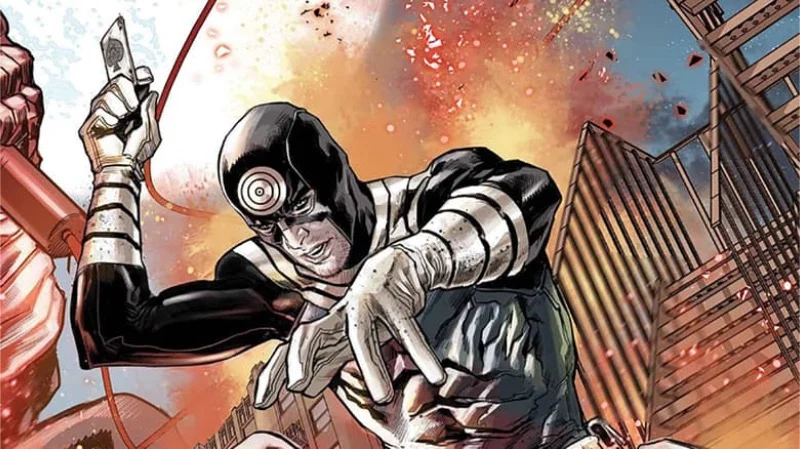
Bullseye debuted in the ‘Daredevil’ comic book issue #131 in 1976, created by Marv Wolfman and John Romita Sr. He’s known for his flawless accuracy and skill at turning ordinary items into dangerous weapons. He works as a hired killer, often targeting lower-profile heroes and pushing their abilities to the limit with deadly precision.
Deadshot first appeared in DC Comics’ ‘Batman’ #59 in 1950 as an incredibly skilled marksman who was never off-target. Over time, he developed into a professional assassin equipped with high-tech gear. Both versions of the character use their perfect accuracy as a defining ability, and they often challenge city-based heroes, creating a connection between DC’s early sharpshooters and similar characters that later appeared in Marvel comics.
Whizzer
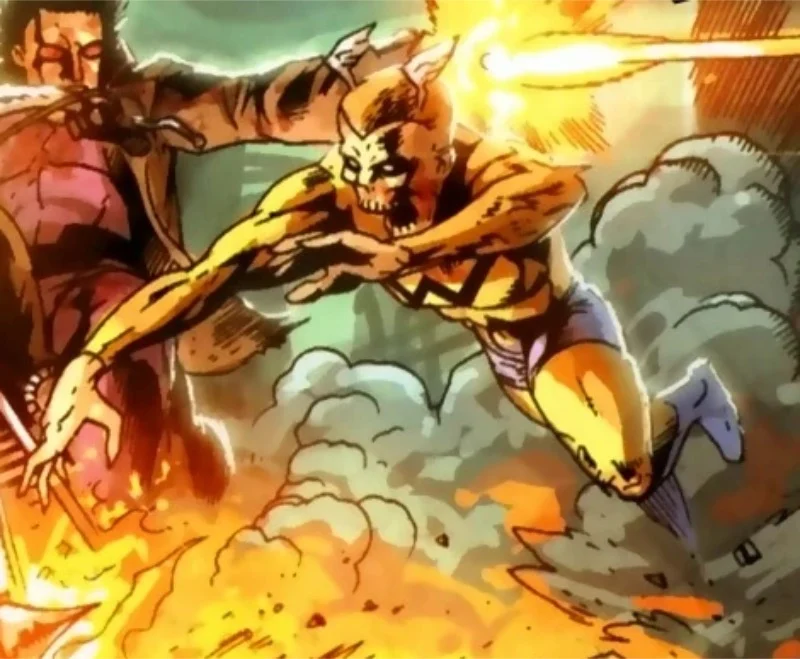
As a long-time comic fan, I always thought it was neat how Roy Thomas and John Buscema brought Stanley Stewart, aka The Whizzer from the Squadron Supreme, into ‘The Avengers’ back in 1971. He’s the classic speedy hero – incredibly fast, thinks super quickly, and can zip across entire cities in a flash. Basically, he was the Avengers’ go-to guy when they needed someone to react *now*.
The Flash serves as the inspiration, with DC Comics drawing from its early and later stories to show how super speed impacts fighting, detective work, and saving people. Adding a speedster to the Squadron creates a Marvel equivalent to DC’s iconic Flash, completing a parallel to the Justice League.
Moon Knight
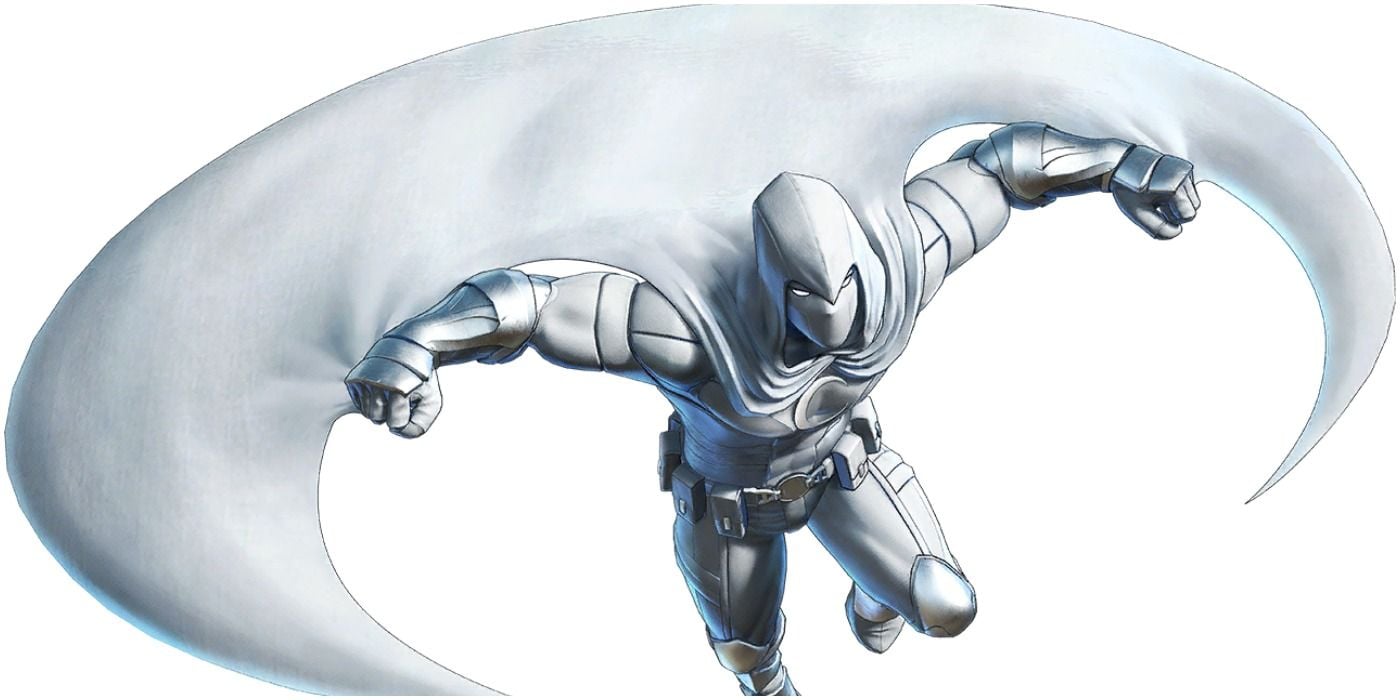
Moon Knight first appeared in the 1975 comic ‘Werewolf by Night’ #32, created by Doug Moench and Don Perlin. He began as a villain for hire, but quickly evolved into a more complicated hero. As Marc Spector, he relies on unique equipment, a crescent moon motif, and extensive training. Later stories expanded his character with multiple identities and explored his struggles with mental health, all of which influence his crime-fighting approach.
Batman pioneered the concept of a resourceful, strategic crime fighter operating in the shadows without superpowers. Moon Knight follows a similar path, built on wealth and advanced technology, but Marvel updates this idea by incorporating Egyptian mythology and the use of multiple secret identities.
Doctor Spectrum

Doctor Spectrum first appeared in ‘The Avengers’ #69 in 1969, created by Roy Thomas and Sal Buscema. He wields the Power Prism, which allows him to create objects, fire energy blasts, and fly. Over the years, different characters have used the Prism, and his stories are often linked to the teams known as the Squadron Sinister and Squadron Supreme.
Green Lantern first introduced the idea in 1940, and again in 1959, of a ring that transforms willpower into solid light creations and empowers a team of galactic peacekeepers. Marvel’s Doctor Spectrum, with his Prism, works similarly, providing a ring-like energy tool that echoes this concept, mirroring the dynamic seen between Green Lantern and the Justice League’s Squadron.
Ikaris

Ikaris first appeared in the 1976 comic book ‘The Eternals,’ created by Jack Kirby. He’s a remarkably durable Eternal with the powers of flight, super strength, and the ability to shoot energy beams from his eyes. Ikaris typically fights on the front lines to protect his people and is often the most recognizable Eternal when stories link ancient legends to the present day.
Ikaris, like Superman, is portrayed as an incredibly powerful flying hero who defends the world from major dangers. While *Eternals* explains these powers through advanced technology, the idea of a strong, caped figure as the central hero is similar to how DC Comics often presents Superman as a symbol of hope and strength.
Let us know your choices in the comments, and tell us about any other Marvel characters you believe were inspired by classic DC heroes.
Read More
- Silver Rate Forecast
- Gold Rate Forecast
- Красный Октябрь акции прогноз. Цена KROT
- MSCI’s Digital Asset Dilemma: A Tech Wrench in the Works!
- Dogecoin’s Big Yawn: Musk’s X Money Launch Leaves Market Unimpressed 🐕💸
- Bitcoin’s Ballet: Will the Bull Pirouette or Stumble? 💃🐂
- Guardian Wealth Doubles Down on LKQ Stock With $1.8 Million Purchase
- Binance and Botim Money Join Forces: Crypto in the UAE Gets a Boost-Or Does It? 🚀
- Twenty One Capital’s NYSE debut sees 20% fall – What scared investors?
- Monster Hunter Stories 3: Twisted Reflection gets a new Habitat Restoration Trailer
2025-10-09 04:18